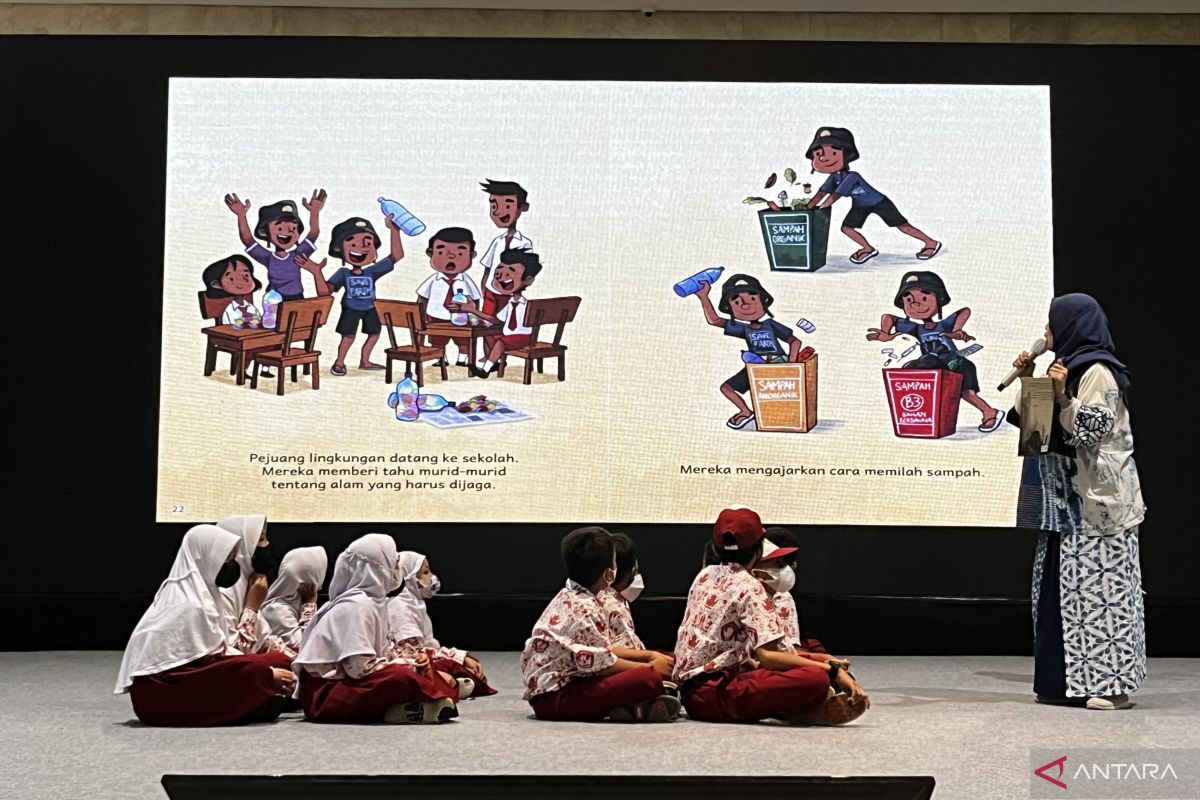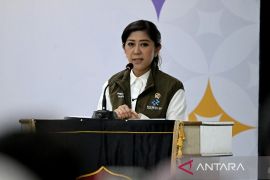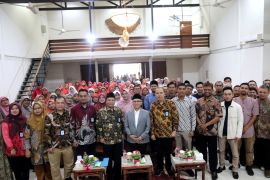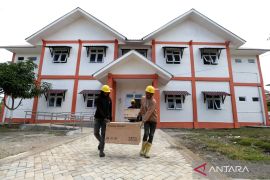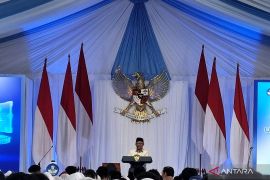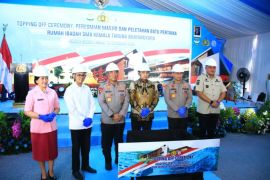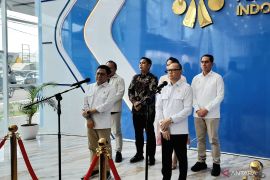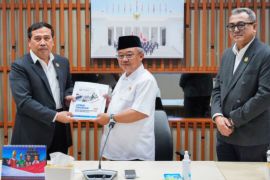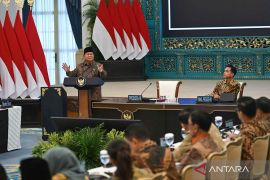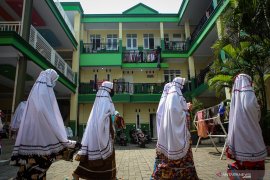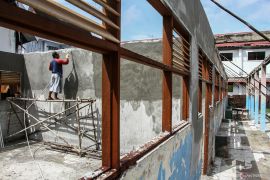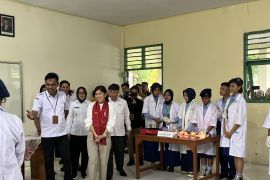Mrs. Ciwuk Musiana Yudhawasthi, the instructor at that time, stood at the front of the class while elementary and middle school-age children sat in front of her.
Matters turned a bit noisy once Mrs. Ciwuk gave the hands-down signal. Some children raised their hands down, while others put their hands up.
This "chaos" occurred, as Mrs. Ciwuk's instructions and the hand movements that the children had to do were deliberately made out of sync.
If the instruction was to put the hand down, then the hand movement must be up, and vice versa. Hence, gales of laughter were inevitable when students bungled while carrying out the instructions.
That was the level of excitement at the Indonesian School of Davao (SID) when two lecturers from Bhayangkara Jakarta Raya University, Dr. Ciwuk Musiana Yudhawasthi, M.Hum. and Dr. Erwin Syahruddin, SH., MH. held a Collaborative Storytelling activity for Teachers and Students at the SID to support the Indonesianization program for Indonesian children residing in the Philippines, especially in the Mindanao region.
This activity was held under the framework of community service duties when the two lecturers carried out a faculty exchange program at the University of Mindanao, the Philippines, during the period from April to June 2024.
The storytelling activity was chosen due to the lack of knowledge about Indonesian history and the limited mastery of the Indonesian language among most SID students.
As is known, SID is a school for Indonesian children who were born in Davao and have lived there and still chose to be Indonesian citizens. Apart from that, the others are children of local staff at the Indonesian Consulate General in Davao.
Hence, the mastery of Indonesian is minimal. Thus, conveying learning materials through storytelling is considered one of the strategies for boosting literacy in students.
Although the activity is often found in the early childhood learning process, Mrs. Ciwuk Musiana believes it does not mean that older children do not need and do not like the concept of storytelling.
Stories are a powerful tool to teach children about the world around them. When children hear stories, it can help them learn about important values as they are introduced to new ideas and exercise their creative thinking skills.
"Storytelling plays an important role in language and cognitive development. It not only improves the students' writing skills but can also increase reading interest and enrich children's emotional intelligence," the lecturer in Communication Sciences at Bhayangkara Jakarta Raya University stated.
In this Collaborative Storytelling activity, the three activities developed are folklore literacy, environmental literacy, and museum literacy.
The use of the Indonesian language is mandatory in interactions during these activities. However, it is still taught according to their level so as not to cause trauma to students.
"It is hoped that this development activity can increase children's knowledge about Indonesian literature and environmental issues, as well as recognize various cultural heritages through museums in Indonesia," Mrs. Ciwuk stated.
This collaborative storytelling activity involves not only students but also SID teachers who serve as the daily teaching staff.
From the results of existing research, as quoted by Dr. Ciwuk, this collaborative storytelling not only imparts knowledge about culture but also trains both students and teachers on artistic skills.
Singing and storytelling in the classroom aim to improve students' academic scores. Moreover, as folk art, storytelling is accessible to all ages and abilities, making it easier to do.
The SID was established in 1968. In June 1968, the SID started its learning process at St. Mangga, Juna Subdivision, Matina, Davao City.
The students of Sekolah Indonesia Davao are the children of the Home Staff of the Consulate General of the Republic of Indonesia (KJRI) Davao City. On August 17, 1968, the Indonesian School was inaugurated by Consul Wardoyo as a branch of the Indonesian School of Manila, and on February 12, 1982, the Indonesian Government built the Indonesian Consulate General’s Ecoland Subdivision building, which included the SID (SID Website).
In the new academic year of 1971, SID started accepting students from the Indonesian community who lived in areas outside Davao City.
This decision was part of the protection and efforts to educate Indonesian children who, at that time, lived in areas quite far from Davao City.
One of SID's goals is to produce graduates who are proactive and have a high level of nationalism and pride in Sekolah Indonesia Davao so that they can become a strong generation in the future. SID currently has elementary, middle, and high school levels.
Lack of parental participation
One of the major problems experienced by SID is the lack of parental participation. Parents play a very important role in a child's growth and development, especially in terms of learning language.
However, this is understandable, as they, who are of Indonesian descent, live in remote areas that are difficult to reach and are economically mostly below the poverty line.
Born and raised in the Philippines, SID students absorb Filipino culture, which is also a major obstacle to re-Indonesianizing them, especially since the teachers also teach multiple subjects and at multiple levels.
The UNHCR records in 2019 stated that the number of Indonesian descendants in the Philippines reached 8,745 people, and those who have registered as Indonesian citizens totaled 2,842 people.
According to Mrs. Ciwuk, this means that SID must start opening up to students apart from Indonesian citizens so that its existence is maintained in the future.
Based on observations made by Mrs. Ciwuk during the program, the number of SID students as of February 2024 was recorded as follows: Elementary School (SD) grades 1 to 6, with a total of 15 children comprising 12 boys and 5 girls; Junior High School (SMP) grades 7 to 9, with 29 children consisting of 11 boys and 18 girls; and Senior High School (SMA) grades 10 to 12, with 41 children constituting 21 boys and 20 girls.
One of the unique aspects of SID is that the school has a male and female dormitory for Indonesian children whose parents live far from Davao City and live below the welfare line, where they get their daily necessities for free.
*) Metha Madonna is a lecturer at University of Bhayangkara Jakarta Raya. Related news: C Kalimantan pursues local languages preservation through storytelling
Related news: Folklore can help children get to know Indonesian culture: ministry
Editor: Rahmad Nasution
Copyright © ANTARA 2024
